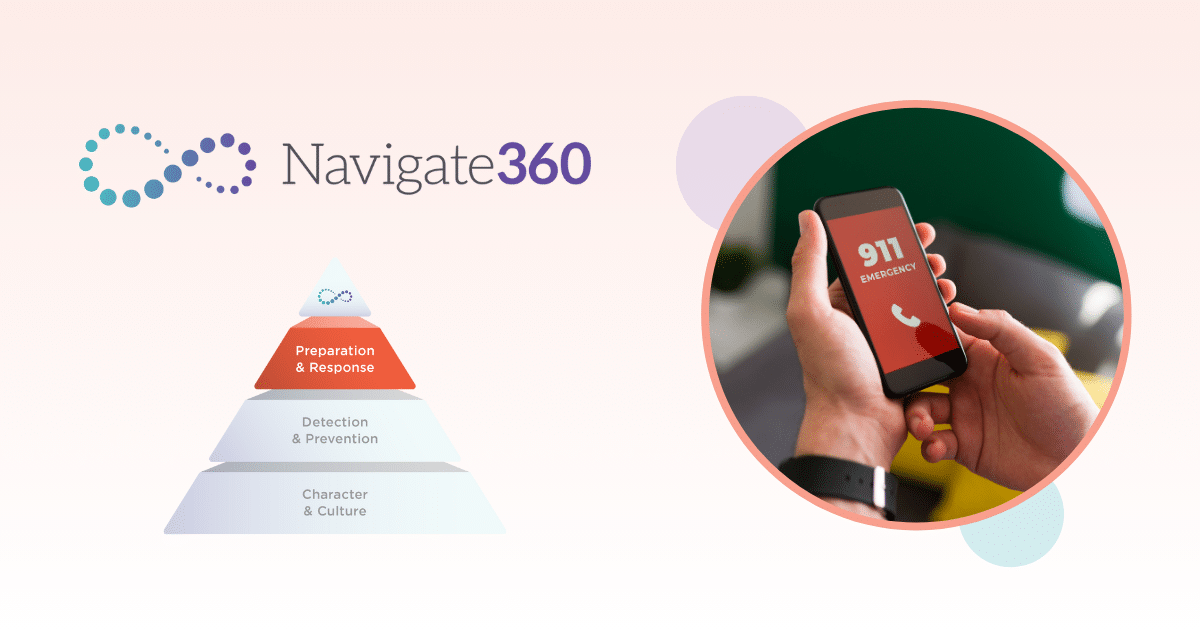On November 30, 2021, a 15-year-old student opened fire at Oxford High School in Oxford Township, Michigan, resulting in the tragic deaths of four students as well as multiple injuries. Afterward, the incident sparked widespread concern about school safety and renewed discussions on gun control measures. After an extensive independent investigation, on October 30, 2023, Guidepost Solutions released the Oxford High School shooting report.
In the 562-page report, Guidepost Solutions found that the shooter’s potential threat went unnoticed at Oxford High School on November 30, 2021, as individuals failed to recognize concerning signs in the shooter’s behavior. Overall, the report highlights shared responsibility across all levels of Oxford Community Schools, emphasizing a collective failure to ensure a safe environment for students.
Understanding the Oxford Report: Navigate360 Expert Provides Insights
Joe Hendry, PSP, CLEE, Navigate360’s Senior Director of On-Site Services, has conducted an in-depth review of the Oxford Report. As a former law enforcement official, Joe has been named by the Ohio Department of Homeland Security and Ohio Attorney General’s Office as an expert in civilian and law enforcement response to active threats. Currently, he is a principal appointed to the Cross Functional Emergency Preparedness and Response (ACT-AAA) Committee for NFPA 3000, writing the national standard for civilian, law enforcement, fire service, and emergency medical services.
Joe has invested his life into keeping others safe. He hopes that by sharing his notes on the Oxford High School Shooting Report, we will all have a greater understanding of what went wrong that day, and what we can do to better prepare, practice, respond, and recover from incidents and emergencies.
Read Joe’s expert insights on the report and the events of November 30, 2021, below:
Introductory Notes by Joe Hendry
While no report is ever perfect, the “Oxford Community Schools Independent Report On The Shooting At Oxford High School On November 30, 2021,” was more comprehensive than most. One of the major benefits of this report is that it evaluated preparation, response, and recovery. It is obvious that the focus of the report was to investigate the failure of the behavioral threat assessment process. Accordingly, I agree with the conclusions of the report drawn by the writers in that area.
As with any report, after reading the Oxford High School shooting report, people will have questions that remain unanswered. Unlike other reports I have read in response to events like those that occurred at Oxford High School, this report focuses on additional key areas that are important to mention. These include the actions taken by staff and students to survive during the event, the response plan (ALICE Training®), and technology shortfalls, as well as what worked in terms of the response. The report documents the unpredictable nature of such an attack. In my opinion, this demonstrates how a risk assessment would have identified numerous issues that, if corrected, could have potentially prevented, mitigated, and improved recovery from the incident—far beyond the failure of just the behavioral threat assessment process.
My notes on the Oxford High School shooting report reflect my take-aways beyond the already known failure of the behavioral threat assessment process and who was to blame. In at least one instance I disagree with a statement made in the report. By making my insights available to the public, I hope that we all come away with greater understanding that ultimately helps save lives.
Understanding the Oxford High School Shooting Report: What Went Wrong?
Explore Joe Hendry’s expert analysis of the Oxford High School shooting report for comprehensive insights into school safety.
Read the Full Report Now

Risk Assessments are Foundational to Layered, Holistic Safety
Communities throughout our nation expect workplaces, schools, and other entities to be safe. Particularly, people want to know that they can safely work, learn, gather, and thrive in secure environments. To fulfill this expectation, establishments must adopt a comprehensive and layered approach to safety.
As a crucial aspect of an organization’s overarching safety and wellness plans, a risk assessment is a systematic process used to evaluate potential risks or hazards associated with a particular activity, process, project, or situation. Its primary aim is to systematically identify and analyze potential risks, evaluate their potential impact, and formulate effective strategies to either mitigate or manage these risks.
Undeniably, risk assessments serve as the cornerstone of a holistic safety strategy, as Joe points out in his response to the Oxford High School Shooting Report. By understanding and addressing potential threats proactively, organizations can create robust emergency response plans that enhance the overall safety and preparedness of their environments. This proactive stance not only safeguards individuals but also contributes to the cultivation of a culture of safety, resilience, and well-being within the community.
10 Reasons Why a Certified Professional Should Conduct Your Risk Assessment
A lot of schools spend time managing their current safety operations and assets but don’t step back to see what might be missing. A comprehensive risk assessment can help your schools uncover hidden weaknesses you may not know about.
Access our free eBook to discover why your schools should turn to a certified professional to assess your school’s safety.




